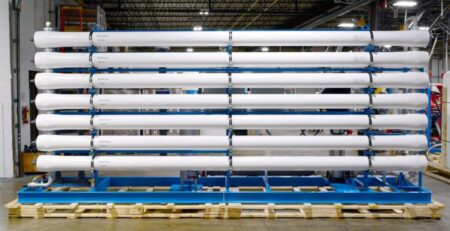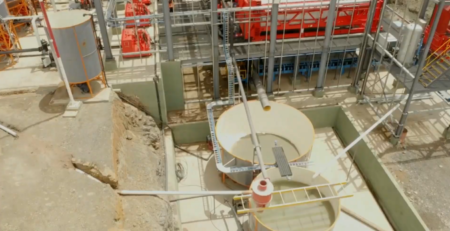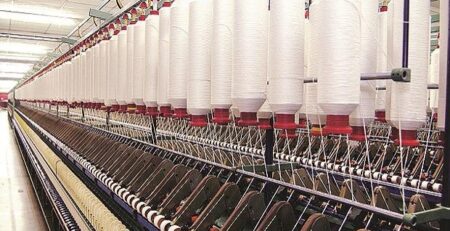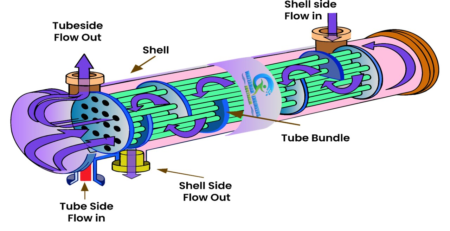Recovery of Precious Metals from Mining Effluent
The mining and electroplating industries generate substantial amounts of effluent that contain various heavy metals, which are valuable resources. Due to environmental and economic considerations, it is becoming increasingly essential to recover these metals from the effluent streams. A novel biotechnological approach has been developed to recover precious metals from materials that are not economically beneficial by conventional techniques.
Sources of Precious Metals in Mining Effluent
Mining effluent can contain various pollutants, including metals, chemicals, and suspended solids. Trace amounts of precious metals can be found in the effluent, which can come from different sources, including:
Ore processing: metals can dissolve in water during the processing of ore and end up in the effluent.
Leaching: some mining operations use chemicals like cyanide or sulfuric acid to extract metals from ore, which can end up in the effluent.
Tailings: leftover materials, known as tailings, can contain metals that were not fully extracted during ore processing. When stored in large impoundments, tailings can leach into the surrounding groundwater and surface water.
Challenges in Recovering Precious Metals from Mining Effluent
Recovering precious metals from mining effluent is challenging due to:
Low concentrations: precious metals are typically present in low concentrations in the effluent, making their recovery difficult and costly.
Complex matrix: mining effluent contains various other pollutants that can interfere with the recovery process and reduce the efficiency of the technology used.
Environmental concerns: some of the methods and technologies used to recover precious metals can be harmful to the environment, and their use can be subject to strict regulations.
Precious Metal Recovery Technologies
Various methods and technologies are used to recover precious metals from mining effluent. These methods can be broadly classified into two categories: physical separation techniques and chemical extraction techniques.
Physical Separation Techniques
Physical separation techniques rely on the physical properties of the metals to separate them from the effluent. Some commonly used physical separation techniques include:
Filtration Technique for Precious Metal Recovery
Filtration involves passing the effluent through a filter medium that captures the precious metals, which can then be further processed to extract them. Although filtration is a simple and cost-effective technique, its effectiveness can be limited by the low concentration of metals in the effluent.
Centrifugation Process for Precious Metal Recovery
Centrifugation involves spinning the effluent at high speeds to separate the solids and liquids. The precious metals can then be further processed from the separated solids. While effective for separating solids and liquids, the use of centrifugation can be limited by the low concentration of metals in the effluent.
Flotation Technique for Precious Metal Recovery
Flotation involves adding chemicals to the effluent that selectively bind to the precious metals and cause them to float to the surface, where they can be skimmed off and further processed. Although effective for separating metals from effluent, the use of flotation can be limited by the low concentration of metals and the presence of other pollutants.
Chemical Extraction Techniques
Chemical extraction techniques use chemicals to dissolve and extract precious metals from the effluent. Some commonly used chemical extraction techniques include:
1. Cyanide Leaching
Cyanide leaching involves the use of cyanide to dissolve gold and silver from the effluent. The dissolved metals can then be further processed to extract them. Although effective, the use of cyanide leaching is controversial due to environmental concerns.
2. Thiosulfate leaching
Thiosulfate leaching is an alternative to cyanide leaching that uses thiosulfate as the leaching agent. Thiosulfate is less toxic than cyanide and can be more selective in its extraction of metals. Thiosulfate leaching is effective for extracting gold and silver from effluent, but its use is still in the experimental stage.
3. Chloride leaching
Chloride leaching involves the use of chlorine to dissolve gold from the effluent. The dissolved gold can then be further processed to extract it. Chloride leaching is effective for extracting gold from effluent, but its use can be limited by the high cost of the chemicals.
4. Pressure oxidation
Pressure oxidation involves the use of high temperatures and pressures to oxidize sulfide minerals in the effluent, releasing the precious metals. The released metals can then be further processed to extract them. Pressure oxidation is effective for extracting gold and silver from refractory ores, but its use can be limited by the high cost of the technology.












